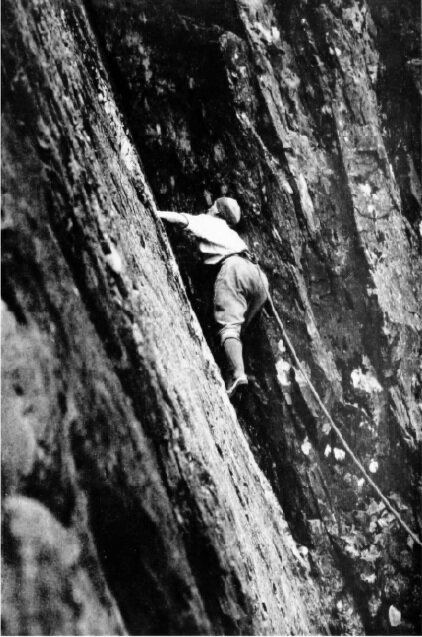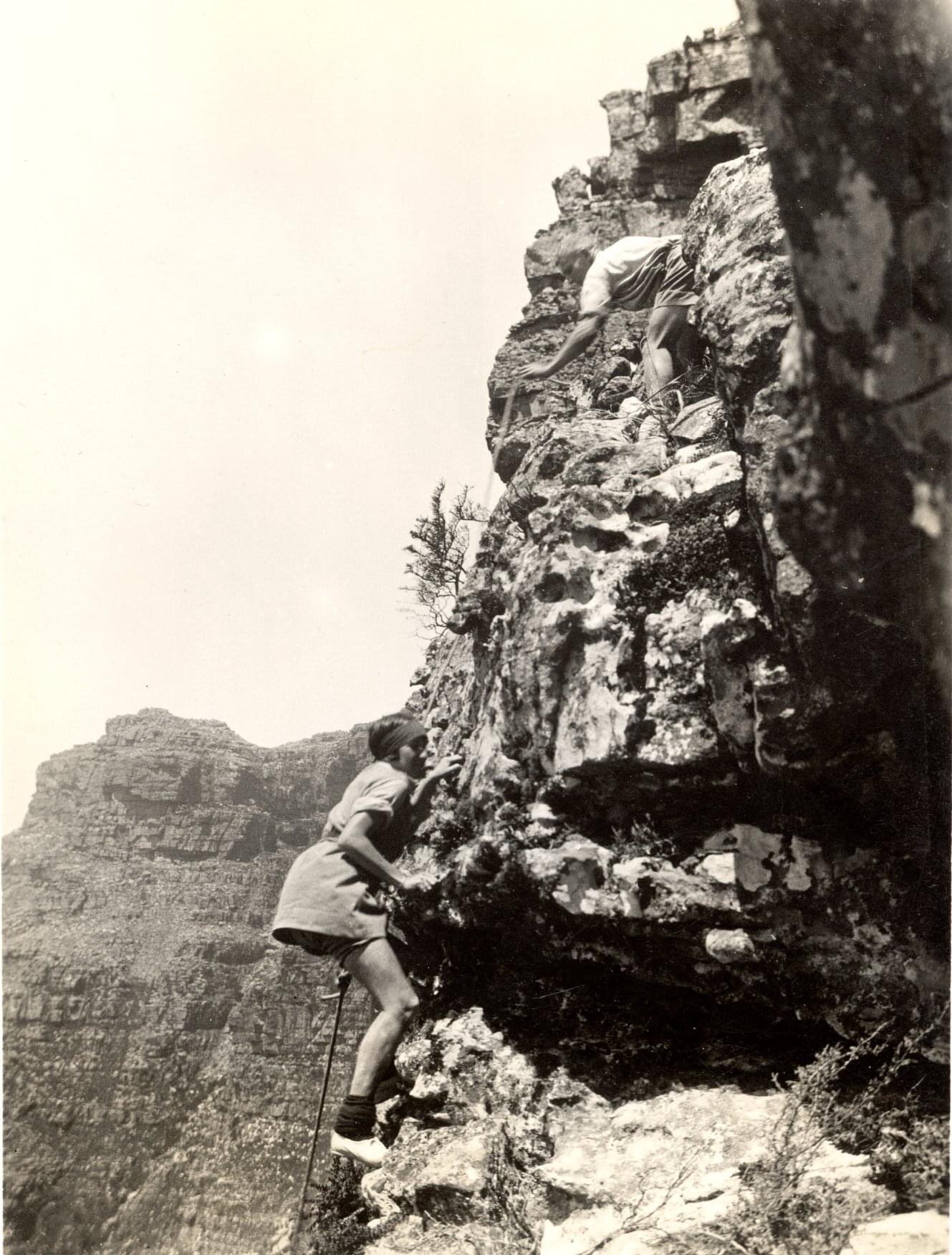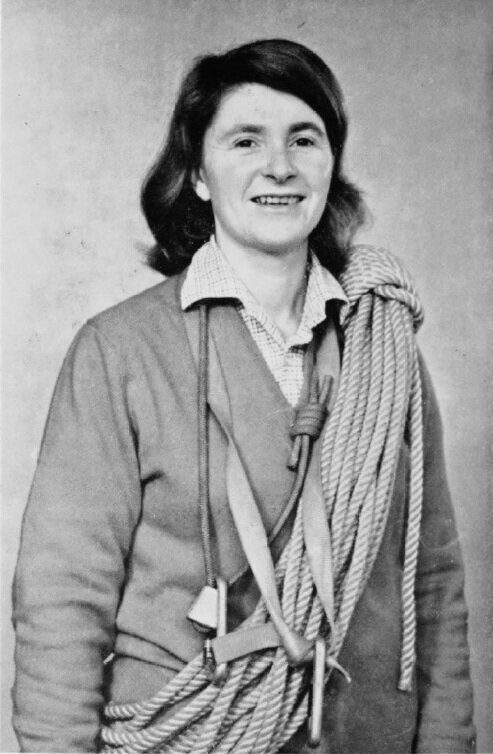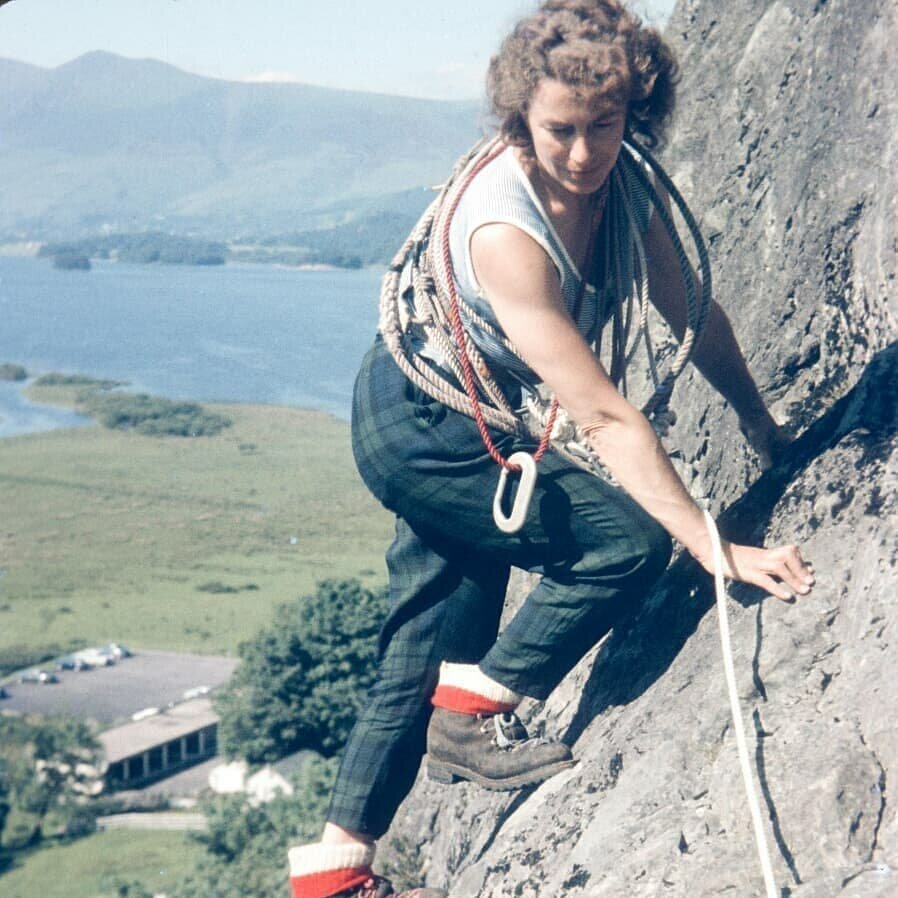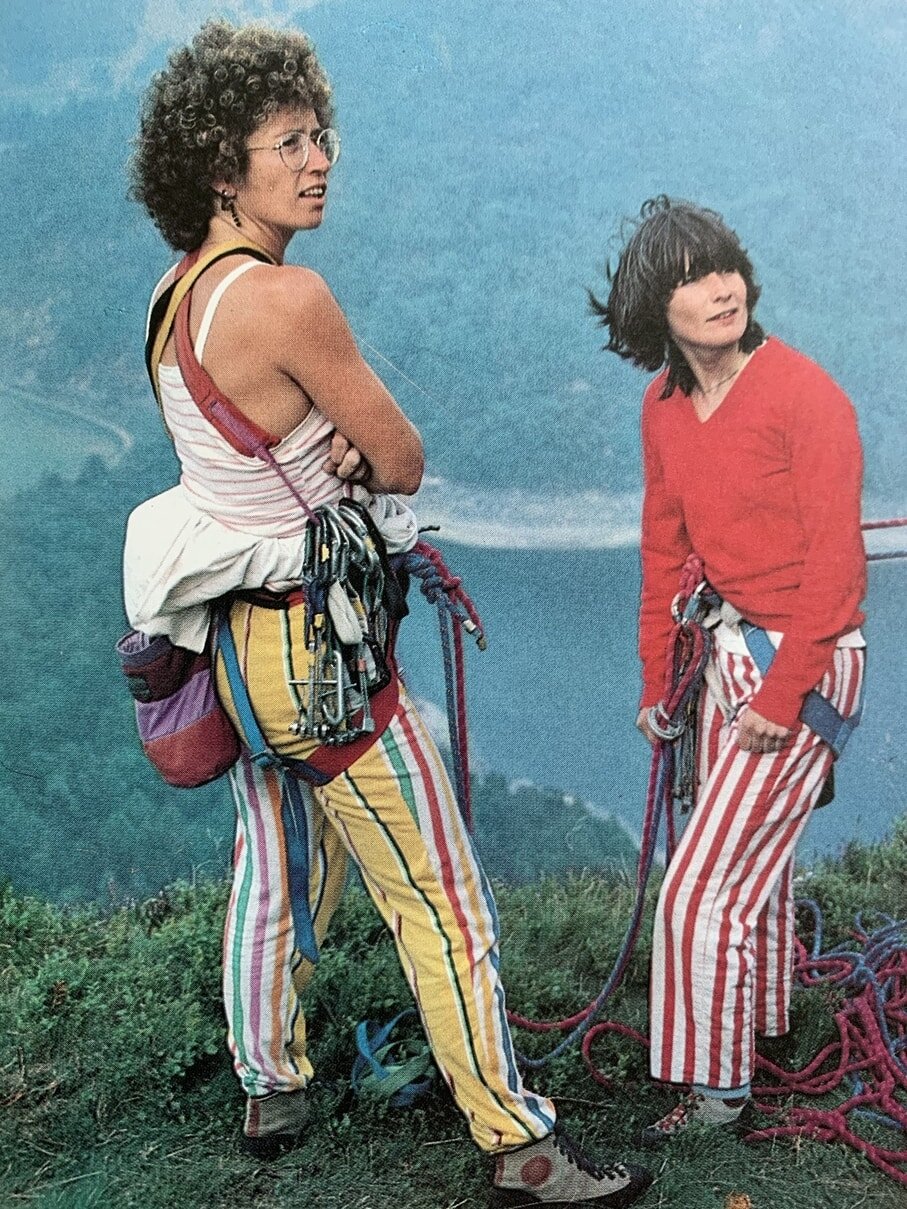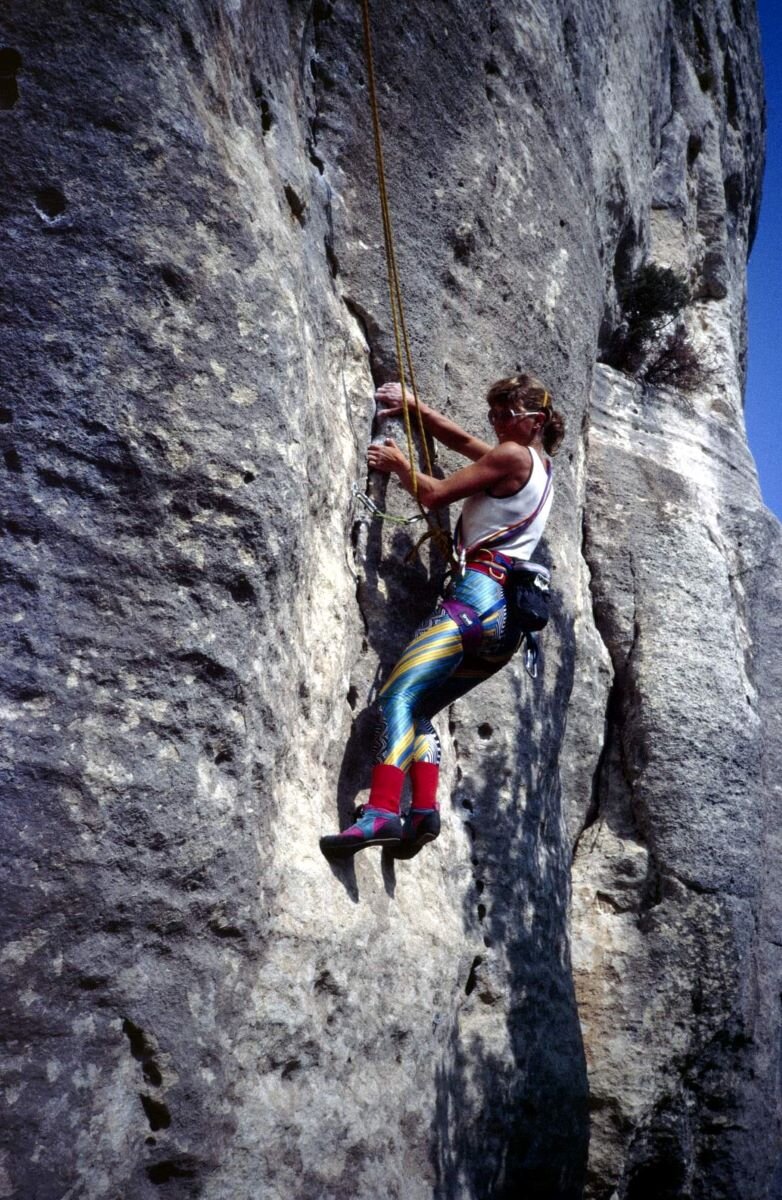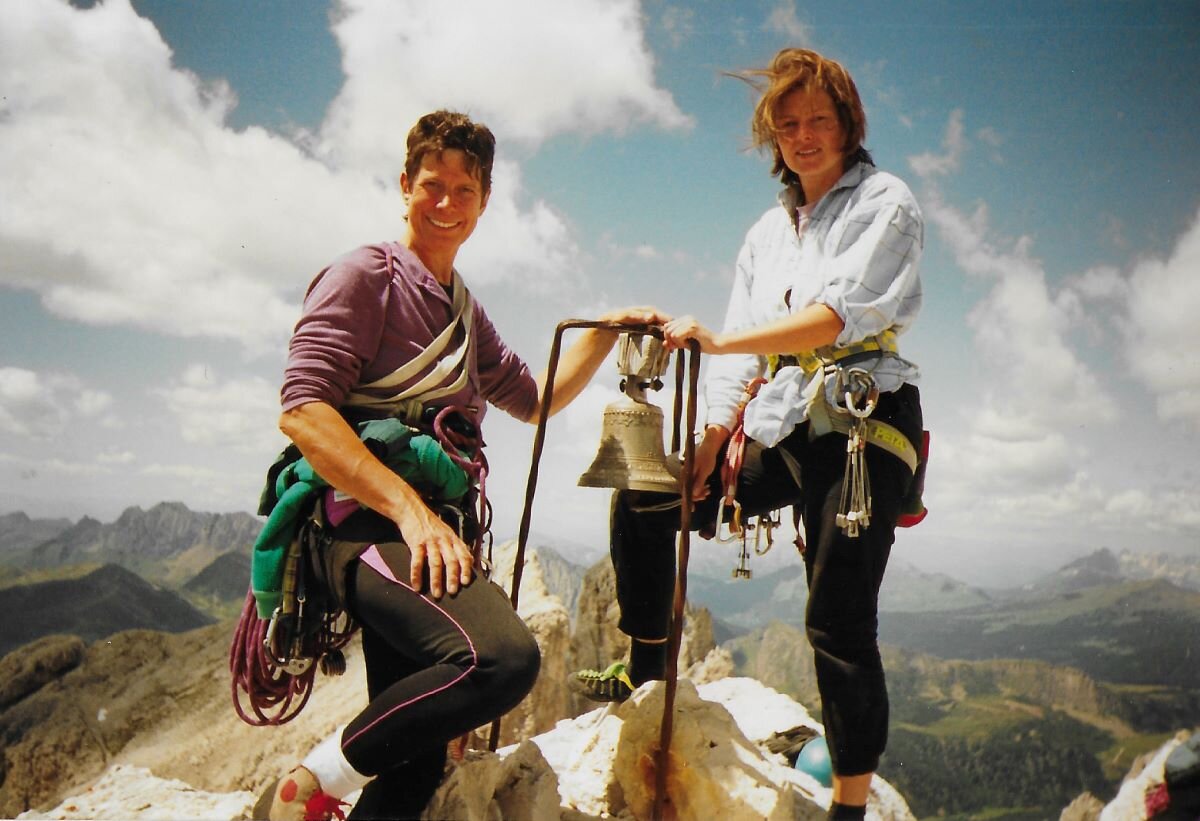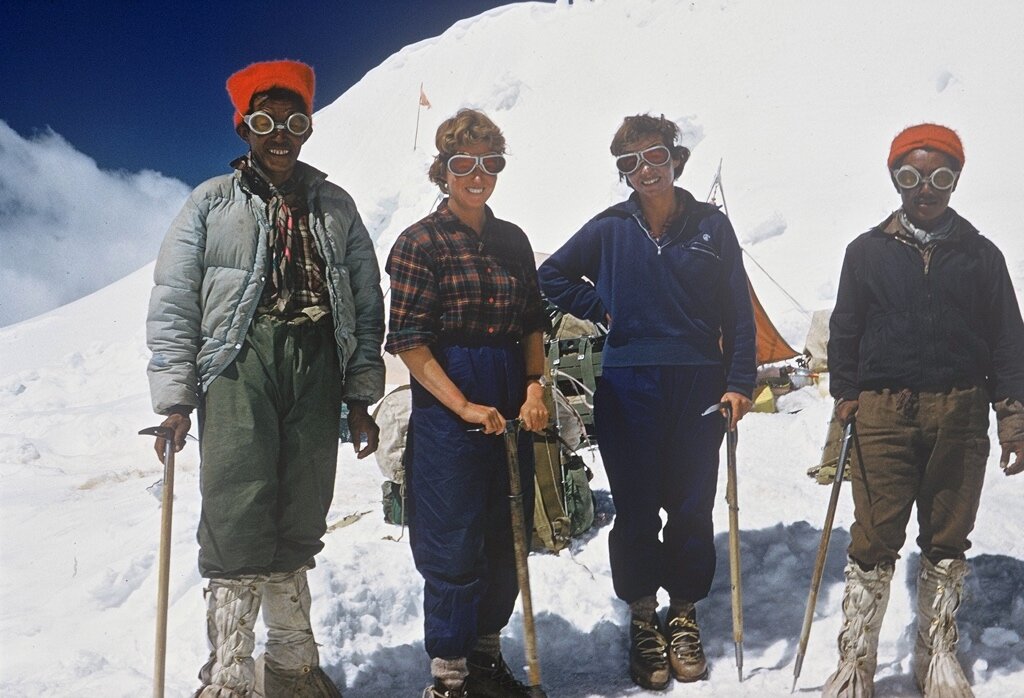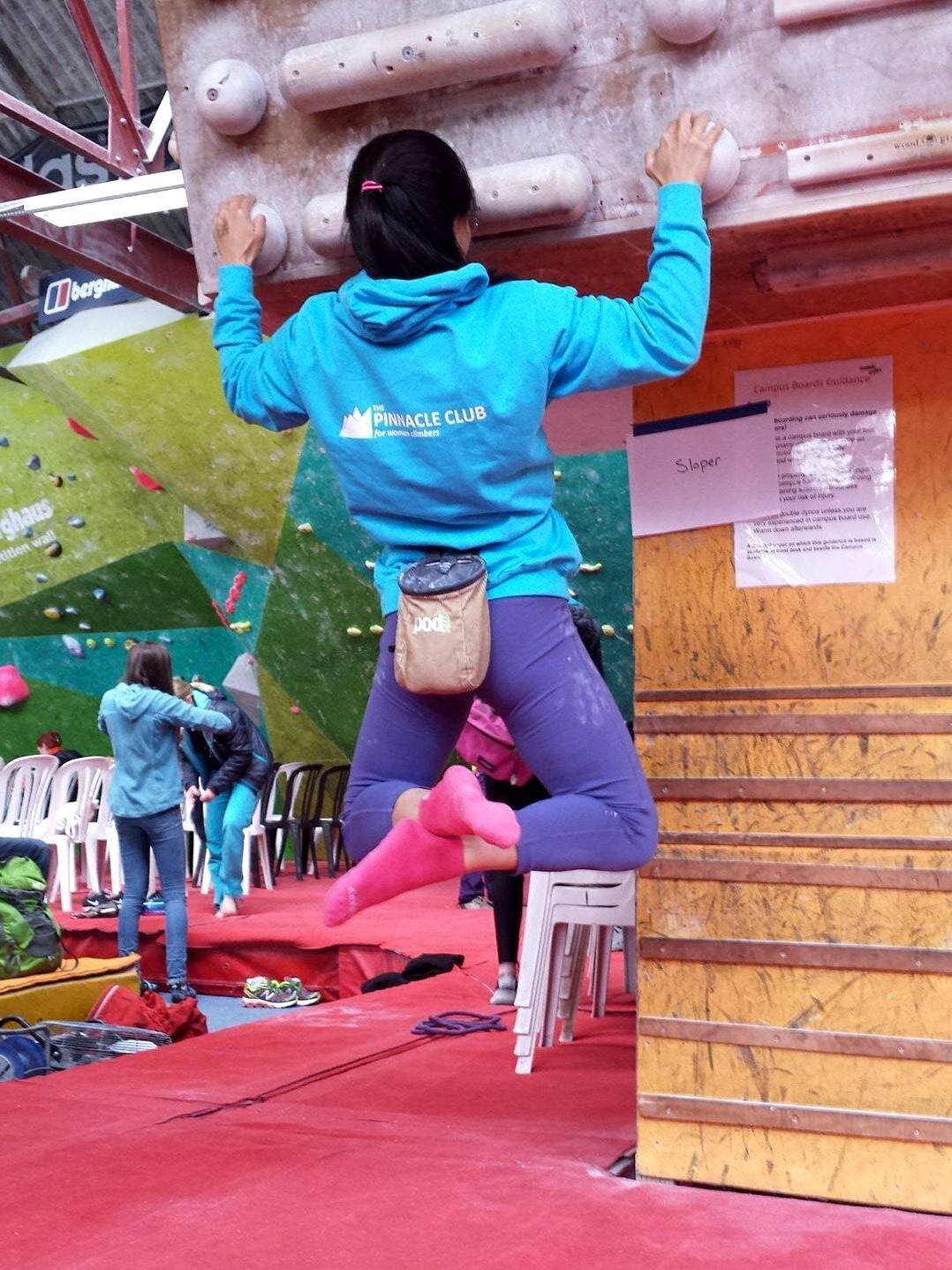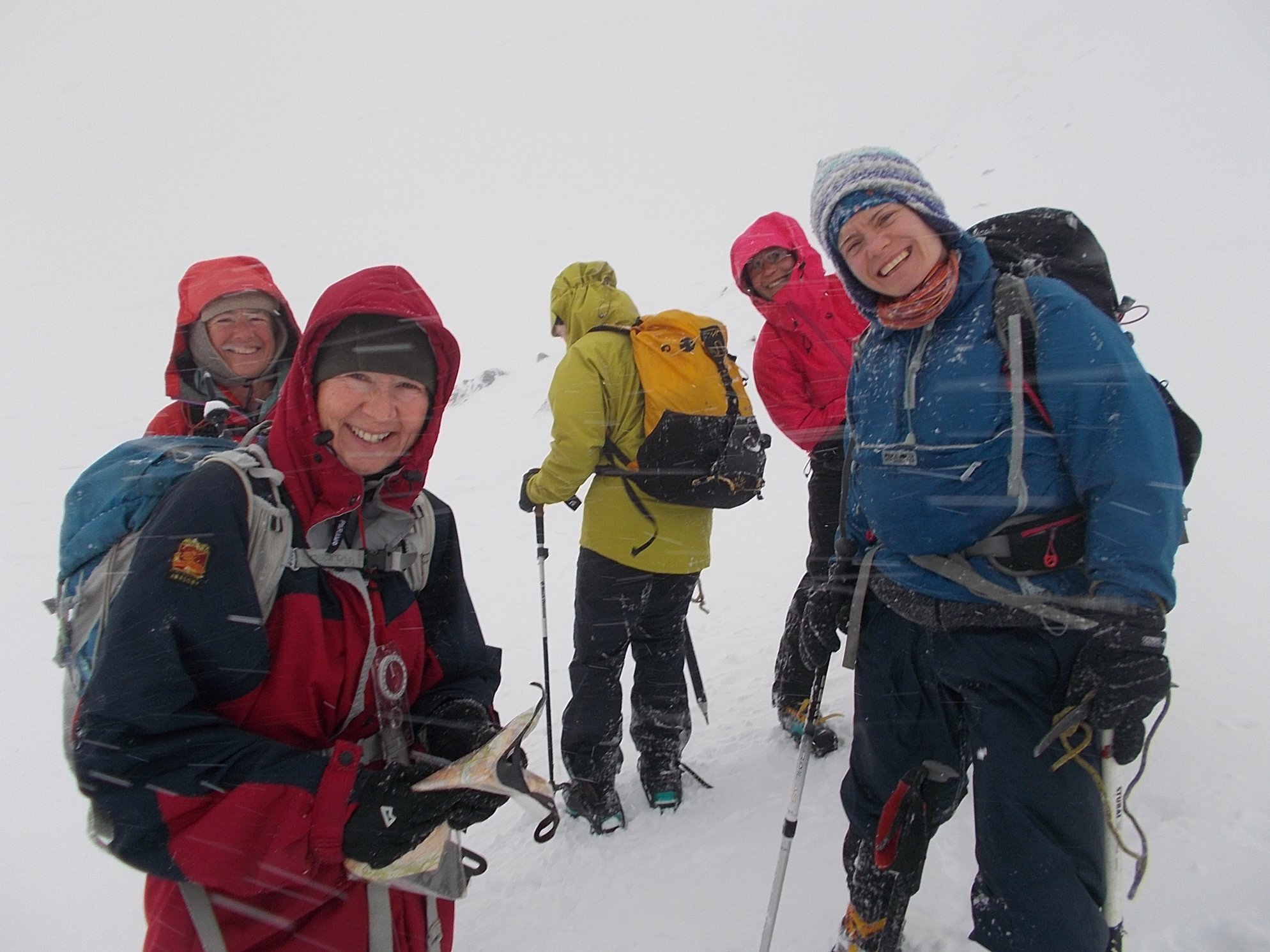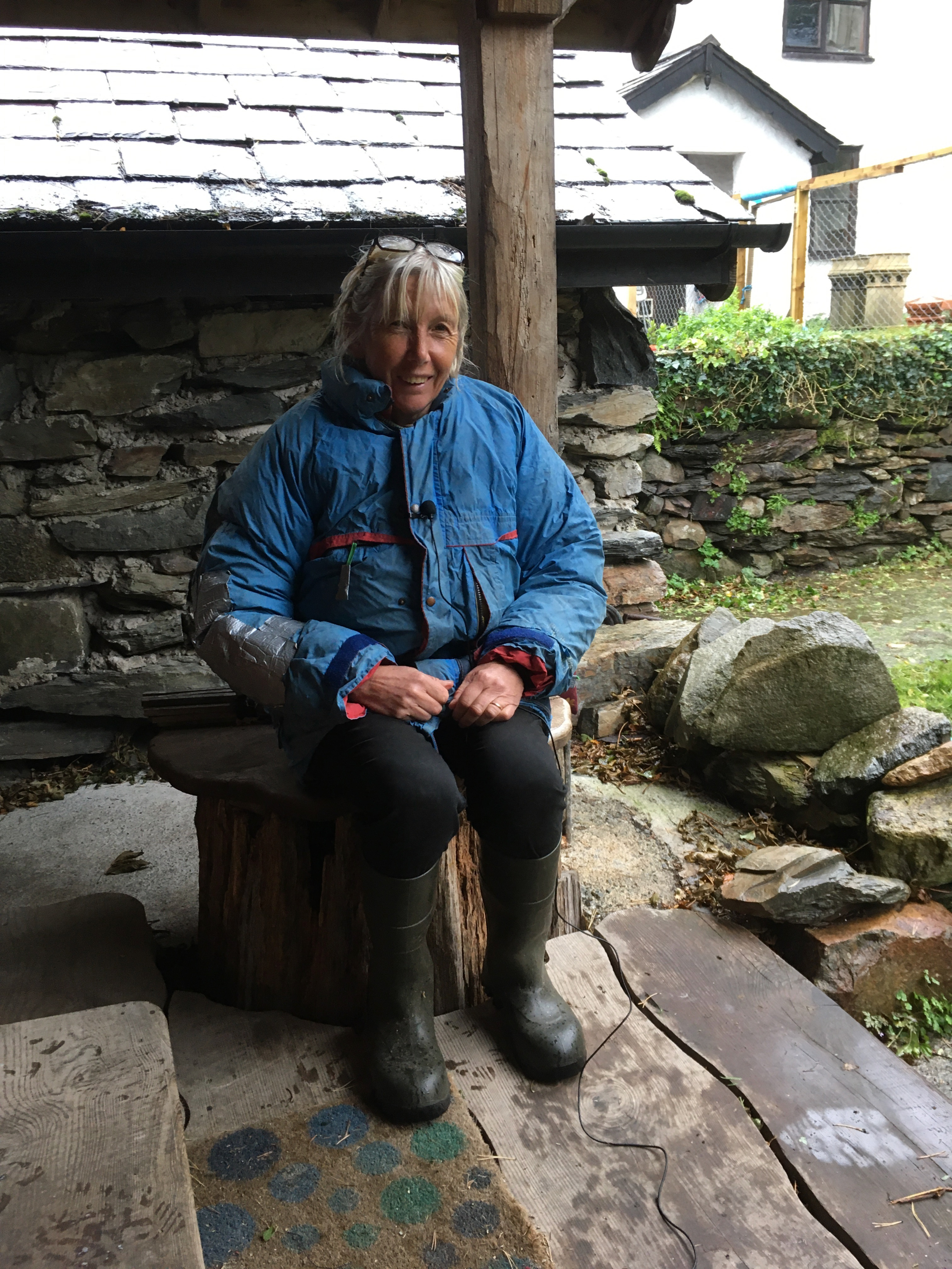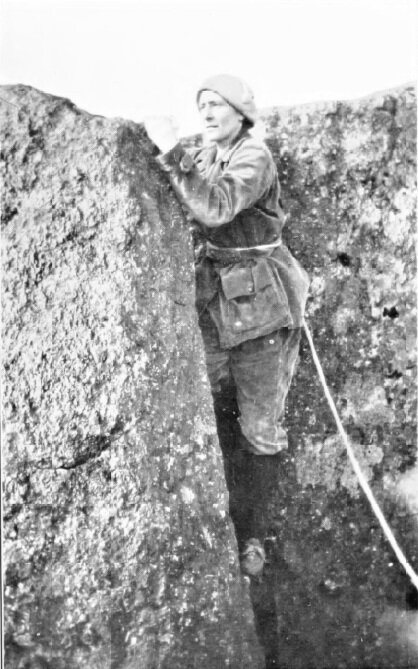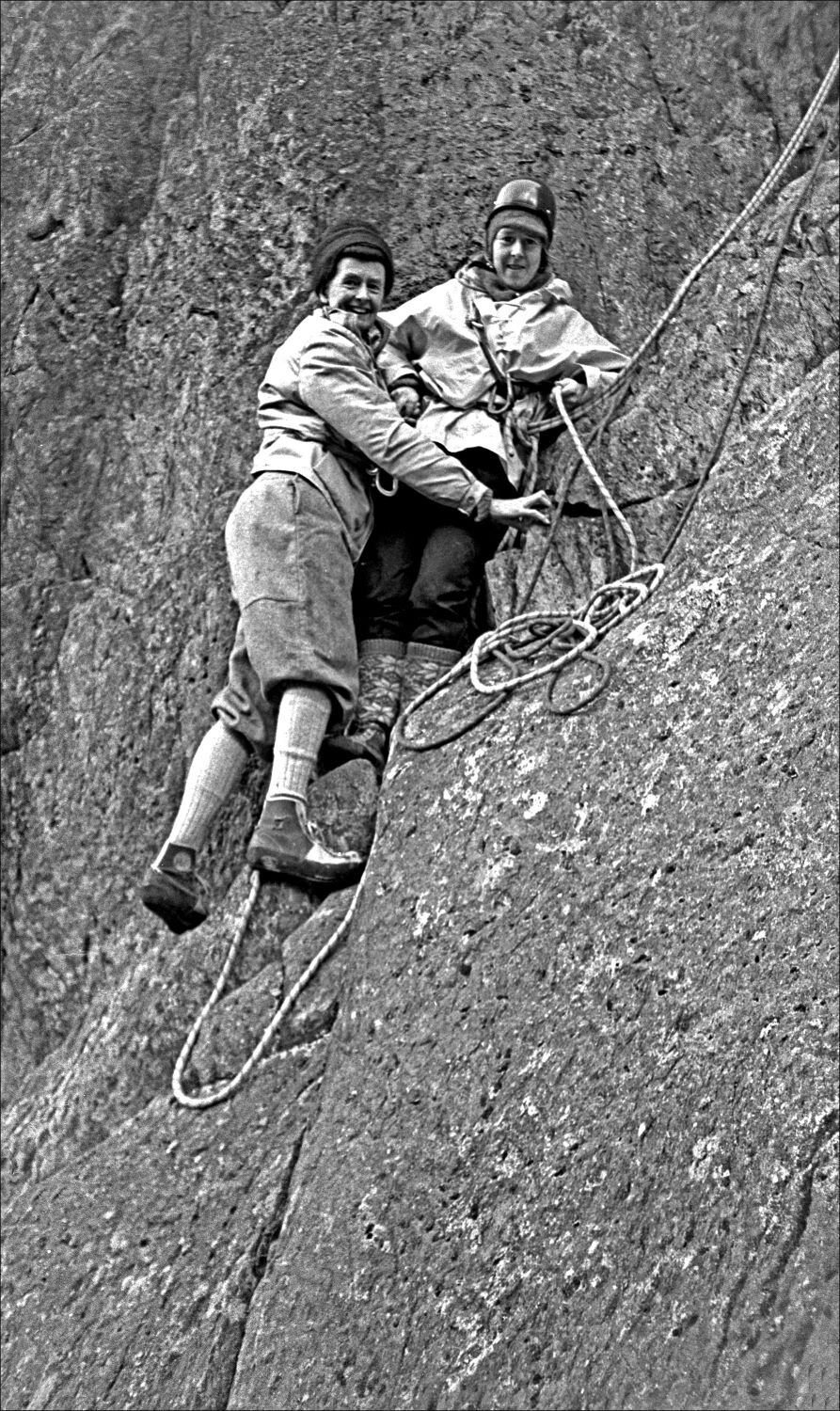Practicalities: making it work (for the non-professional climber)
Some of the challenges to fitting climbing into everyday life haven’t changed much over the years – juggling weekends away with the working week, or looking after children and family members. Others — finding the right clothing, having good transport to get to climbing venues — have become significantly easier.
Families and work
Perhaps not surprisingly, there’s little discussion within the Pinnacle Club of how people combine work and climbing
Apart from the women whose work is directly linked with climbing (as guides or instructors) climbing is, for most, an escape from work: a powerful way of managing work-life balance. Some members of the Pinnacle Club have chosen to limit their work commitments, or retired relatively young, so as to maximise time for climbing and opportunities for travel. Others have taken unpaid leave or had to juggle work and holidays to maximise the time away. For those with demanding jobs where it’s hard to be flexible about hours (teachers, medics, etc.), it can feel as if climbing is being slotted into the corners of life. But it’s all the more powerful for that.
Pictured: Hilary Lawrenson demonstrates the art of multitasking at Agden Rocher, Peak District. Credit: Jessie Leong
Meeting like-minded women with a similar family life is a major benefit of the club
“So is there life after birth? Once things have settled down a bit and you can actually get out before midday, life opens up again. Mums boulder while babies sleep or grovel in the peat. Watch out for inquisitive sheep. In crowded situations, it is worth investing in a helium balloon to attach to the baby – they are easily mistaken for a pile of clothes and trodden on.
“Once children are mobile, terminology is important – Grace, at 4, would happily ‘go climbing’ or ‘climb a mountain’ but was much less keen on ‘going for a walk’.” — Hilary Lawrenson
Pictured: Brede Arkless and family, 1970s. Credit: John Cleare
> Read more: Ann Blandford on combining climbing, family and work
Attitudes to climbing when pregnant have changed
Gwen Moffat records her first weekend climbing with the Pinnacle Club in 1949 in her book Space Below My Feet. Mid-climb on Lliwedd, she was asked whether she’d be going to the alpine meet in July. She replied that it would be impossible as she was having a baby then. “Consternation! Most of the club were on the cliff (including several doctors) and messages were relayed from climb to climb, and up and down the ropes, to the effect that Moffat was having a baby and what was the quickest way to get her off the cliff?”
In contrast, by the early 1990s, Hilary Lawrenson wrote in the Club Journal that “as long as it feels right for you, there is no reason for giving up climbing [when pregnant], other than the difficulty of finding ever easier angled crags to accommodate the protrusion. Overhangs get a bit like hard work after 5 months.” She describes adapting a Whillans harness with a sling to enable her to continue climbing, seconding Edgehog (E4) in Glen Nevis whilst 5 months pregnant. According to a cartoon by Sue Logan, the extra pair of hands was helpful on the arete.
Audio stories - family and work
Hilary Lawrenson in the Peak District in 2018
Sally Macintyre in Jordan in 2000. Credit: Tom Prentice
Jan Rickman in 2019
Jean Drummond before a traverse down to the San Margarita hut at Porton via Ferrata in the Dolomites
Margaret Clennett at Gavarnie in the Pyrenees in 2006. Credit: Pete Stokes
Alison Cairns, topping out on Outside Edge, Craig yr Ogof, Cwm Silyn, Snowdonia
Getting to the climbs (and back)
From the earliest days of the Pinnacle Club, members travelled all around the globe to go climbing
Train travel across Europe was common. Trilby Wells wrote in 1928 about a typical journey to Italy, involving a train to Aosta via Turin, where they were met by a mule driver who piled the luggage into a little cart. The party of four then walked for five hours to their base at Eau Rousse.
Pictured: Joyce Tombs née Hughes, Rienetta Herbert née Leggett, Nea Morin, Annis Flew, Eileen Pyatt — 1956, after various adventures in the French Alps.
In the days before most people had personal cars, hitchhiking was common
“Generally, drivers tell me, they don’t approve of women travelling on their own – it’s too dangerous – but, they always add quickly. ‘You’re quite safe with me.’ I must admit I have occasionally had my doubts.” — Helen Goodburn, journal no 12, 1965-66
Pictured: Edith Bennett, Evelyn Pirie, A. Wilson, Blanche Eden-Smith, Ruth Hale and Biddy or Penelope Deed travelling in style in 1936 — Ogwen Valley, North Wales
In recent years, budget airlines have opened up opportunities for quick trips to ‘hot rock’
Kalymnos and Spain are especially popular. Long-haul flights have put more exotic destinations within reach for ordinary members. What can we learn from past adventures for future travel, to help us reduce our carbon footprints? Will we go back to the future, inspired by the train, bus, boat and horse travel of our early members?
Pictured: Alex Nicholson in Tenerife, 2019
Clothing
By the time the Pinnacle Club was established, women were able to wear clothing suitable for climbing
…although usually borrowed from everyday life. Times had moved on from the late 1800s / early 1900s, when women climbing had to choose between wearing something “practical but scandalous (or even illegal), or wearing something acceptable socially but that made climbing harder” (Alison Albright, American Alpine Club - read more).
In 1924, L.E.Bray commented, in journal no.1, “We had an early breakfast at which I criticised my companions’ clothes. Miss P. actually wore upon her head a mauve cotton sunbonnet! Now, no one has ever climbed a mountain in a sunbonnet – it is simply not done, and I told her most severely; but she only laughed at me and even my best language did not prevail upon her to change her headgear.’
Later on memories were still strong of negative attitudes towards women wearing trousers, as recorded by EH Daniel in the 1929-1931 Club Journal: “Just before the war, people on the road near Ogwen would walk backwards for quite a long way, in astonishment and mirth at the sight of my sister and me in our corduroy breeches.” She continued: “And now, young women, taking an ordinary tramp across country, find it necessary to array themselves in most unbecoming shorts!”
Pictured: founder member Dorothy Pilley Richards, 1926. Credit: Alpine Club Library
More enlightened attitudes developed
...and Joe Brown’s climbing shop saw an opportunity of advertising specifically to women in the 1965 – 1966 Journal:
“Ladies…. all you want for climbing can be obtained from the Joe Brown shop, in particular breeches (from stock or made to measure), sweaters plain and fancy, cagoules, boots, helmets, anoraks, pitons, ski- and apres-climbing trousers, socks, sleeping bags and woolly hats.”’
The last twenty years or so have seen a transformation in outdoor clothing for women. We now have stuff that fits, works well and looks great. The founding members of the Pinnacle Club would be amazed!
Pictured: Alison Cairns and her amazing 80s leggings on Darius (E2), High Tor, in 1988
Photo gallery: 100 years of women’s climbing clothing
Click to move through images.

